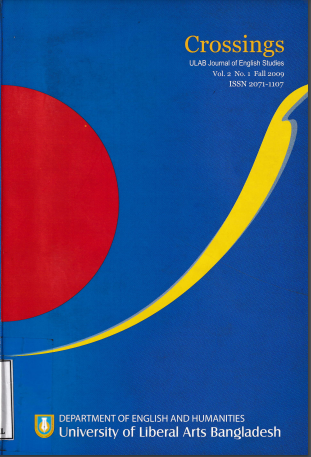Bangladeshi Literature:
Outside the Global Tango
DOI:
https://doi.org/10.59817/cjes.v2i1.364Abstract
This paper explores the difficulty of reading or transmitting in translation. In recent decades, writings from certain cultures have found a great deal of global currency, both in translation (viz. Latin America) or in international languages (viz. Indian writing in English). At the same time, writing that is as rich in its content and artistry from other languages, termed ‘vernacular’, from the point of view of global marketplace, finds it quite hard to reach any audience beyond its linguistic boundaries. Is it mainly because, as Gayatri Spivak accused, these literatures are ‘stylistically non-competitive’, or is it due to other structural reasons? This paper argues that it is mainly due to limitations of the global reading protocols, rather than qualities inherent in the vernacular writings. While a great deal of such writings might be a bit too ‘local’. and makes access to its realm of reality and references a bit too prohibitive for readers not familiar with the history and context of the tales and the writings, that is not the only reason. Some of the recent ‘international’ writing has succeeded so well partly by learning how to manage this access without diluting the ‘localness’ too much, thus retaining just the right amount of ‘authenticity’, for a wider consumption than just in one’s own culture, or perhaps primarily for consumption in other cultures. But, it is possible both to write and read in vernaculars. primarily for a vernacular audience, while retaining a richness that would be rewarding for global readers too, if only they were open to widening the protocols of their reading. This paper takes a Bangladeshi novel, Shahidul Jahir’s Shey Ratey Purnima Chhilo to demonstrate the shape and nuances that such a reading might take.
Downloads
Published
How to Cite
Issue
Section
License
Copyright (c) 2009 K. Anis Ahmed

This work is licensed under a Creative Commons Attribution 4.0 International License.
All articles published in Crossings are licensed under a Creative Commons Attribution 4.0 International License



